Kanban Boards: A Kanban Board is a key Kanban tool for workflow visualization of tasks in a Project. This technique helps in understanding better our processes and getting an understanding of overall work progress.
Background
SCRUM is typically in a scenario where there is the predictability of scope at least till the next couple of Sprints or the upcoming release. But what happens in an unpredictable environment. Production support teams for example never know what waits for them in the current day. If SCRUM doesn’t fit such scenarios, what does? The answer is Kanban.
Video: Kanban Boards
Types of Kanban Boards
The work of all Kanban teams revolves around a Kanban board, a tool used to visualize work and optimize the flow of the work among the team
- Physical board
- Digital board
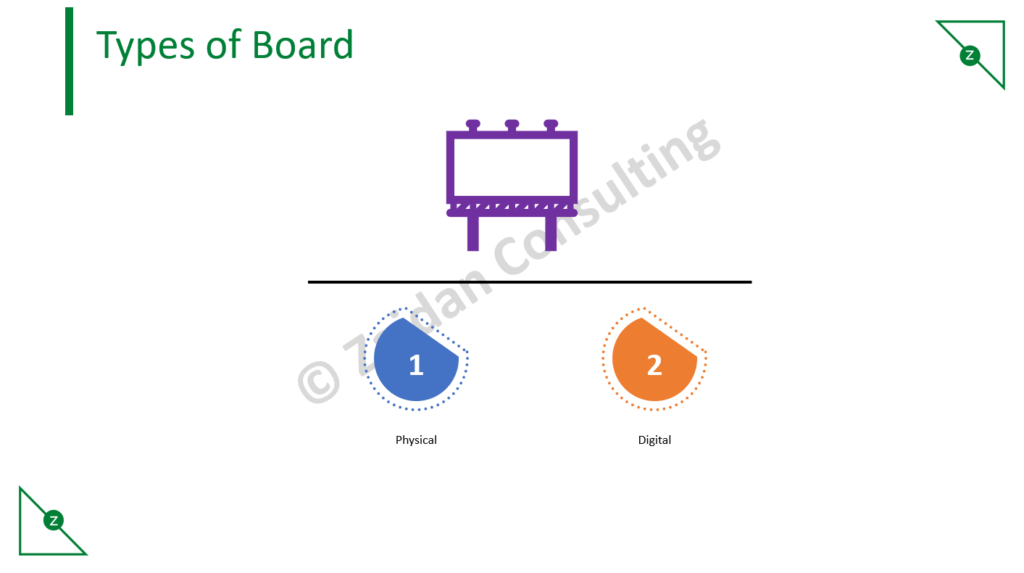
Elements of Kanban Boards
One of the first things you’ll notice about a Kanban board is the visual cards (stickies, tickets, or otherwise). Kanban teams write all of their projects and work items onto cards, usually one per card. For agile teams, each card could encapsulate one user story.
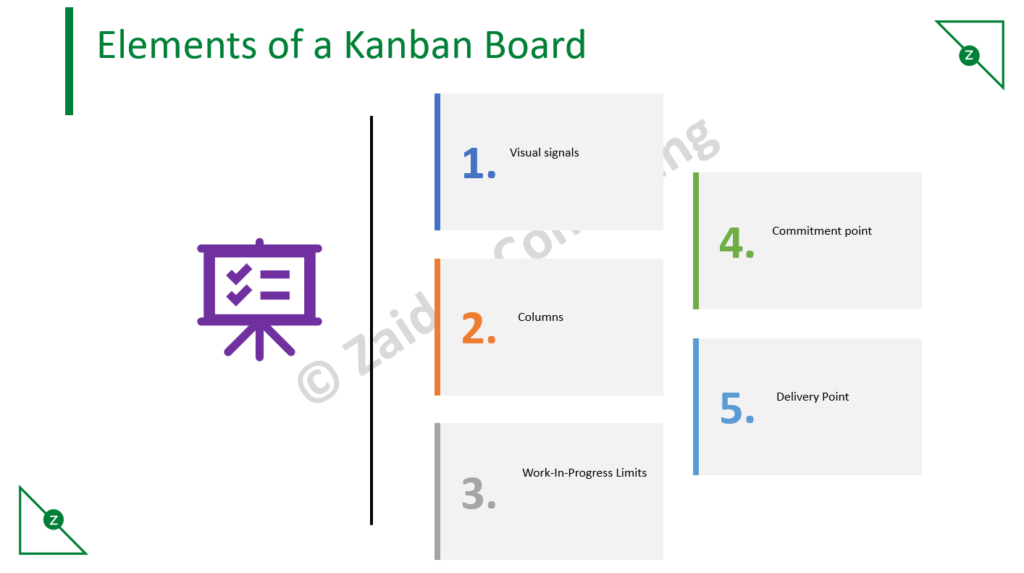
Visual Signals
Once on the board, these visual signals help teammates and stakeholders quickly understand what the team is working on. Kanban teams often have a backlog for their board. This is where customers and teammates put ideas for projects that the team can pick up when they are ready. The commitment point is the moment when an idea is picked up by the team and work starts on the project.
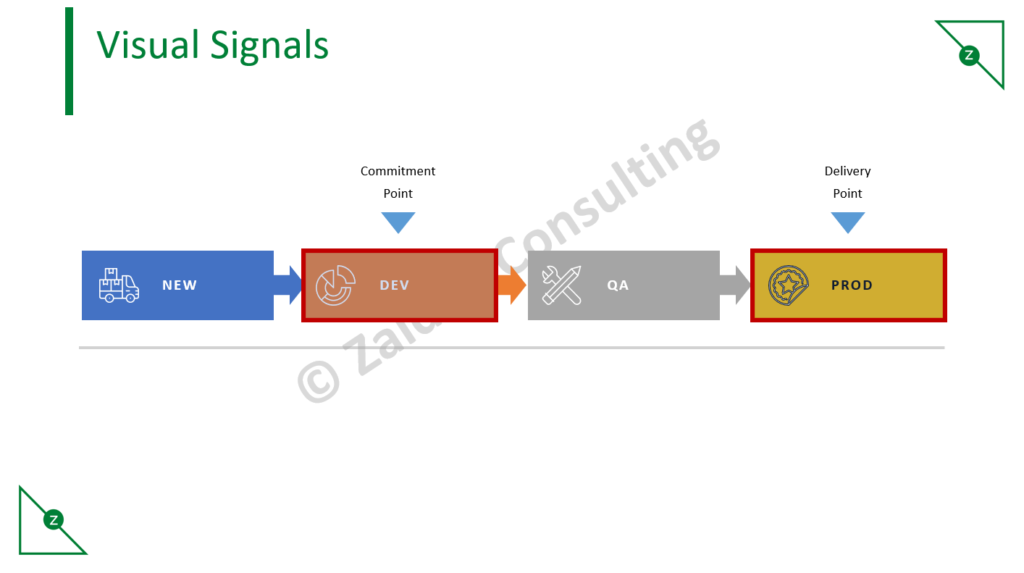
Kanban Boards: Columns & WIP
Another hallmark of the Kanban board is the columns. Each column represents a specific activity that together composes a “workflow”. Slide Cards flow through the workflow until completion.
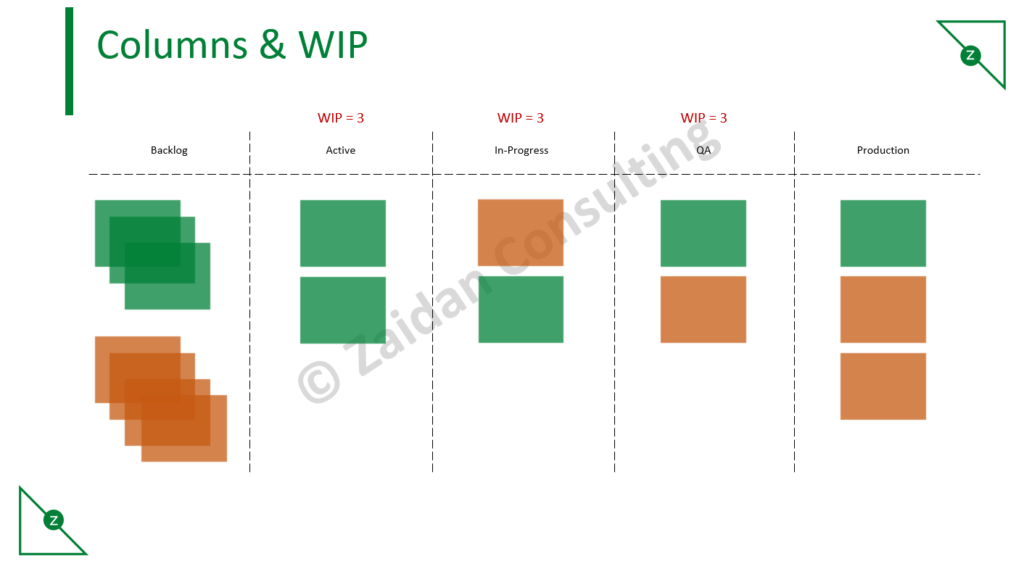
WIP limits are the maximum number of cards that can be in one column at any given time. A column with a WIP limit of three cannot have more than three cards in it. Work In Progress (WIP) limits set the maximum amount of work that can exist in each status of a workflow. Limiting the amount of work in progress makes it easier to identify inefficiency in a team’s workflow.
WIP Limit Guidelines
The delivery point is the end of a Kanban team’s workflow. For most teams, the delivery point is when the product or service is in the hands of the customer. The team’s goal is to take cards from the commitment point to the delivery point as fast as possible
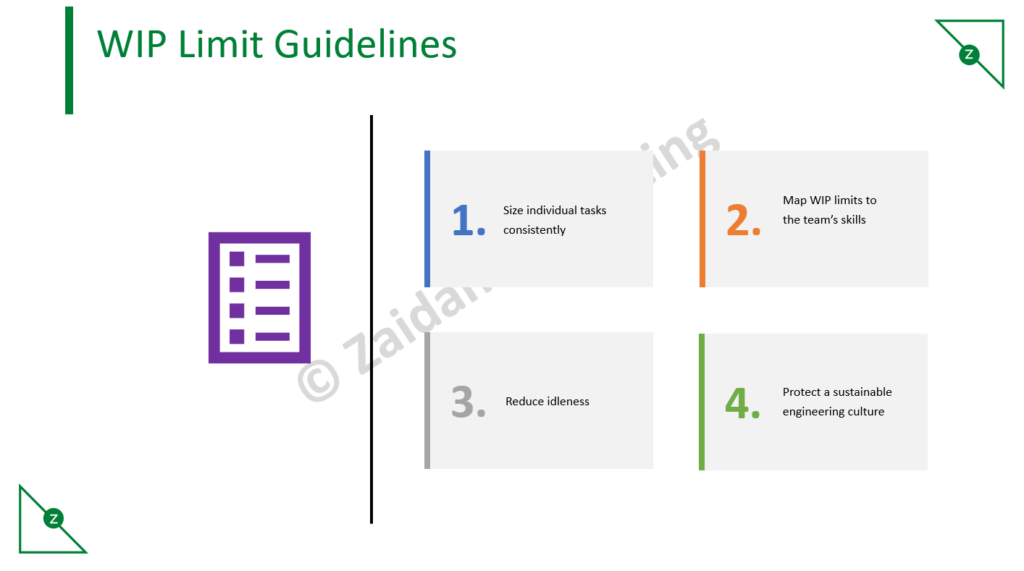
Size Consistently
When breaking down requirements and user stories, it’s important to keep individual tasks to no more than 8 hours of work. Doing so increases the team’s ability to estimate confidently, and it helps prevent bottlenecks. Nothing slows down a team and aggravates WIP limits like a big work item clogging up the pipeline.
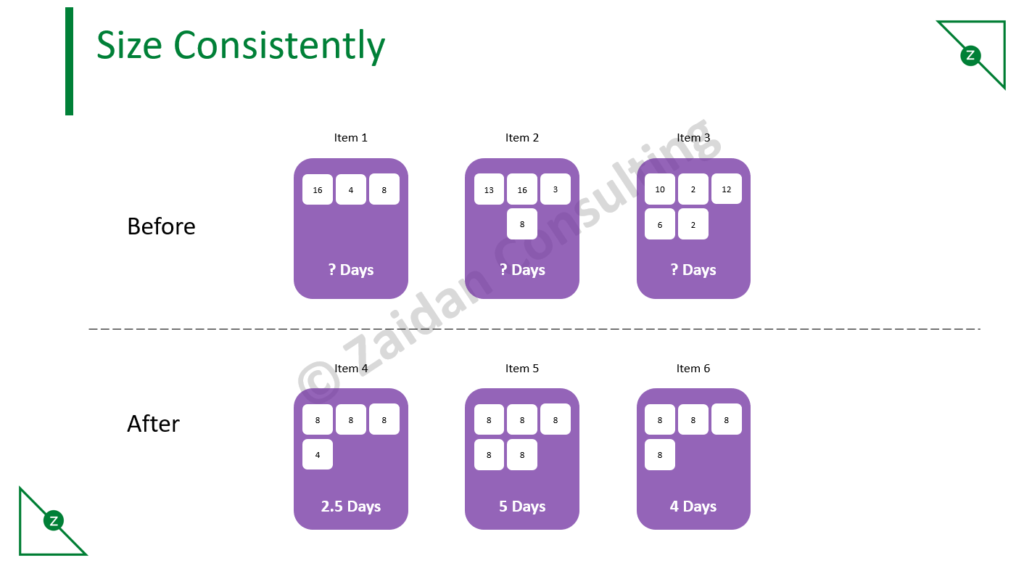
WIP Limits with Team Skills
If your team has specialists on the skill, work in progress limits may differ when the specialist is involved. Create a status specific for the specialist’s work. If bottlenecks occur in that status, use the opportunity to educate other team members to add additional capacity for the specialist’s skill sets and increase flow across the entire team.
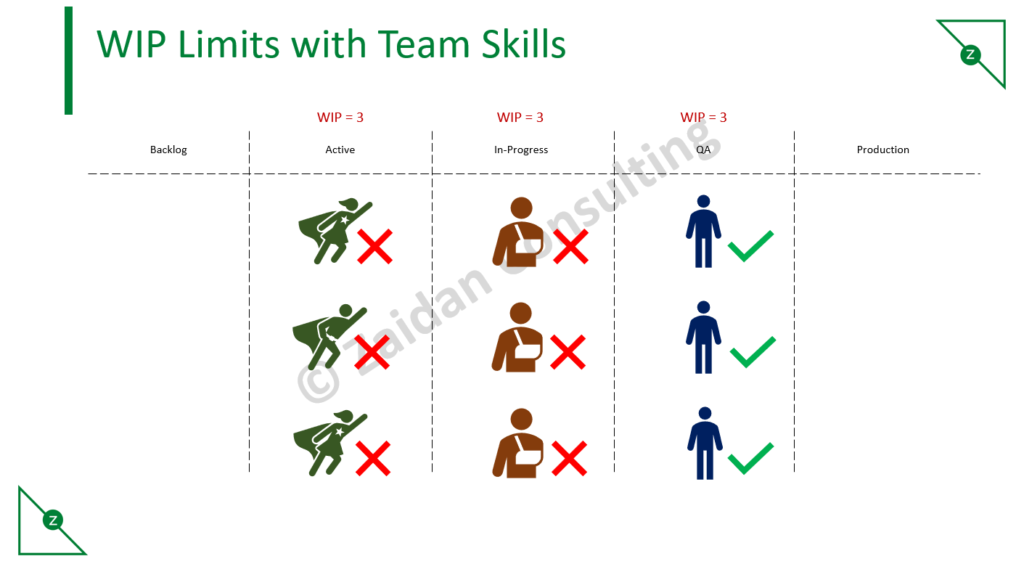
Idleness
When a team member has some downtime, encourage them to help an upstream or downstream team member. They’ll contribute to the overall productivity of the team, and learn something along the way
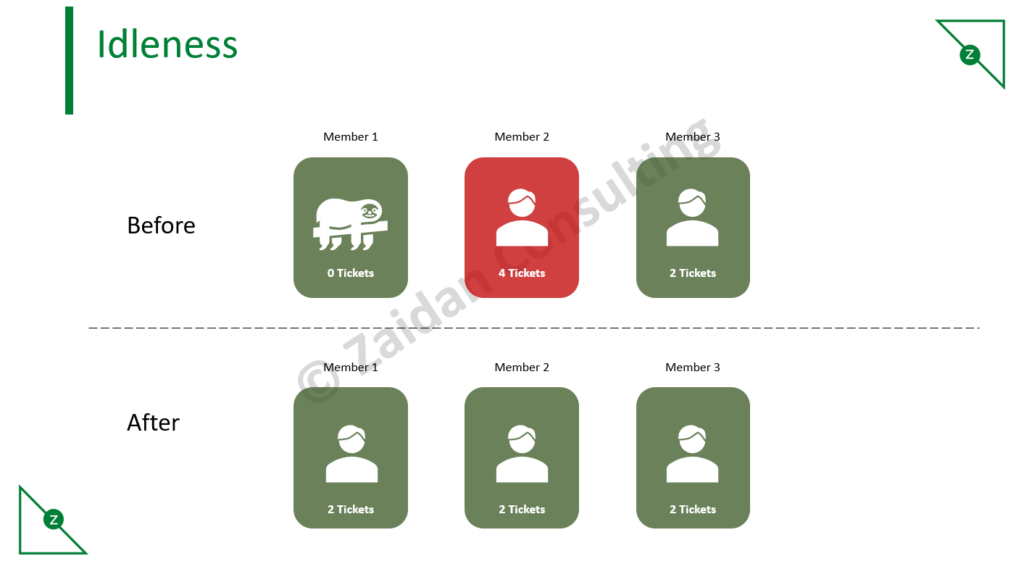
Engineering Culture
Work in progress limits does not mean developers need to rush through work to avoid work overload in a particular status. They are meant to support solid agile engineering practices that protect the quality of the product and the health of the code base.
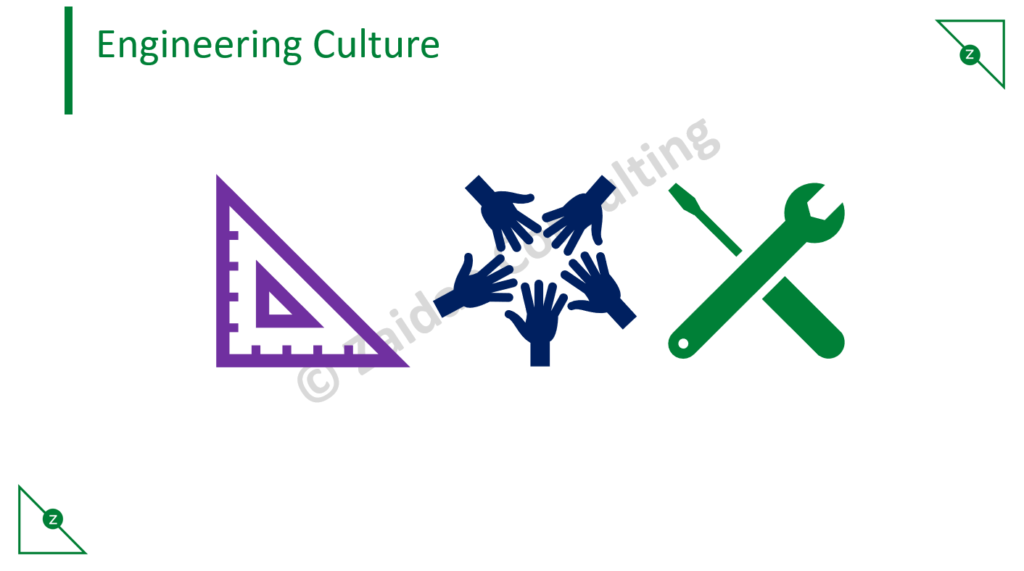
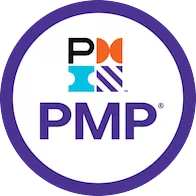
Our PMI® PMP®-Prep Course
If interested in this course, click here
- Case study based training
- LIVE instruction 36 Hours
- Post course guidance
- Exercise per topic
- 4 Mock exams for practice
- WhatsApp group support
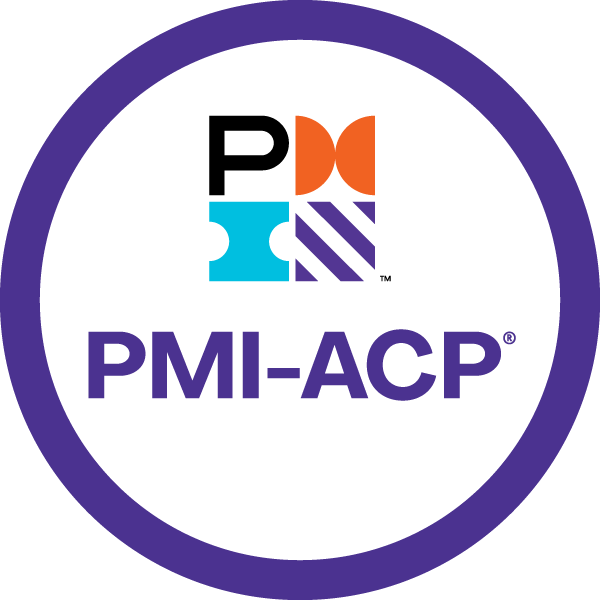
Our PMI® ACP®-Prep Course
If interested in this course, click here
- WhatsApp group support
- 4 Mock exams for practice
- Exercise per topic
- LIVE instruction 20 Hours
- Post course guidance
- Case study based training

JD (Coach/Instructor/Writer)
JD (a.k.a Janakiram) is a Project Management Coach, Trainer Author and Practitioner @Zaidan Consulting. He comes with around 17+ Years of experience primarily from the Software Industry. He is certified on PMI® PMP®, ACP®, Scrum Alliance CSM and Microsoft Certified Solution Developer on C#.NET. He has also authored the book “Practical Agile for Beginners”

About Zaidan Consulting
Zaidan Consulting are specialists in Project and Program Management space. Our training offerings include:
- Project Management Training
- Agile Training
- PMI®-ACP® Prep Training
- PMI®-PMP® Prep Training
- PMI®-CAPM® Prep Training
- ScrumStudy™ Authorized Training Partner (A.T.P)
Or you can contact us @+(91) 7672011471
Or Email us: contact@zaidanconsulting.com
